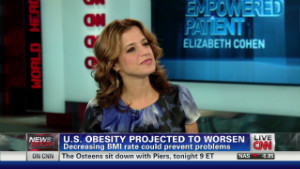A study suggests redheads are at higher risk of melanoma even if they avoid the sun. (American Cancer Society) |
Doctors have long urged people with red hair, fair skin and freckles to avoid the sun and its damaging ultraviolet rays. To venture outdoors without a wide-brimmed hat and sunscreen was simply courting skin cancer, they cautioned.
Now, however, a study in mice suggests that those among us with ginger hair and fair complexions face an elevated risk of the disease even when covered up.
The study, published online Wednesday in the journal Nature, suggests that the same reddish-yellow pigment that gives rise to rusty locks and an inability to tan is itself a potential trigger in the development of melanoma, the deadliest form of skin cancer.
The findings appear to solve the riddle of why darker-skinned individuals have a significantly lower risk of melanoma than lighter-skinned people, even when the sun protection factor, or SPF, of dark skin is just two to four levels higher than that of light skin. It could also explain why red-haired individuals are more susceptible to melanoma than anyone else, even blonds.
"Even if you're good about avoiding UV rays — you know, putting on sunscreen, wearing protective clothes and being careful at the beach — it's still possible this red pigment is related to carcinogenic activity anyway," said Dr. David E. Fisher, director of the melanoma program at Massachusetts General Hospital in Charlestown and senior author of the study.
Melanoma is a from of cancer that begins in the skin's pigment-producing cells, or melanocytes, and is often associated with fair skin, excessive exposure to sunlight and tanning lamps, or a preponderance of moles. The National Cancer Institute estimates that more than 76,000 people will be diagnosed with melanoma in 2012 and that more than 9,000 will die from it.
The color of human skin, hair and eyes is dictated by two types of melanin pigment: pheomelanin, which is reddish-yellow, and eumelanin, which is brownish-black. Both are produced in the upper layers of the skin, and people with a greater proportion of brown-black pigment will have a darker complexion than people who have a greater percentage of the red-yellow pigment.
Initially, Fisher and colleagues set out to examine how moles can develop into melanoma when exposed to ultraviolet light, a form of radiation that can damage DNA. The test subjects were mice bred to be susceptible to cancer. Because mouse hair is also determined by eumelanin and pheomelanin, researchers used black, albino and golden-yellow — or "red-headed" — mice to mimic a range of human pigmentation.
Yet even before researchers got a chance to expose the mice to UV rays, 50% of the redheads developed melanoma within a year. Their black and albino counterparts, however, developed melanoma at low rates and over a longer period.
"We were very surprised," Fisher said. "In fact, one of the first things we did was go back into the animal room with a UV meter just to be sure that for some inexplicable reason the lights were not actually emitting ultraviolet radiation."
Study authors surmised that since UV radiation could not have caused the cancer, the pheomelanin pigment itself was causing a damaging chemical reaction inside the animals' skin cells. This damage, called oxidative stress, occurs when cells produce an altered type of oxygen molecule as waste. Normally, cells can protect against these waste molecules, but an overabundance can damage the cell and its DNA, possibly laying the foundation for cancer.
When researchers compared skin samples of the different mice, the redheaded mice showed almost three times as much damage due to oxidative stress, leading authors to conclude that pheomelanin was the culprit.
Conversely, the brown-black pigment, eumelanin, possibly acted as an antioxidant in the black-haired mice and counteracted the red pigment's damaging behavior. The albino mice lacked either type of functioning pigment.
The idea that pheomelanin might play a role in melanoma was advanced a number of years ago by epidemiologists. However, it was only recently that chemists were able to isolate each pigment and examine them individually for such an experiment, according to Dr. Meenhard Herlyn, a microbiologist and dermatology professor at Philadelphia's Wistar Institute.
"To show this in these animals is very, very convincing," said Herlyn, who was not involved in the study but wrote a review that accompanied it. "This will be a landmark study on the importance of this pigment."
He also echoed the study authors' belief that instead of exonerating UV rays in the development of melanoma, radiation probably made the situation worse.
"The big danger here is that somebody will say, 'Oh, well if I can't do anything about it, then I can go to a suntanning salon and go tanning on the beach and just call it fate.' That's not the case," Herlyn said. "One still has to be very conscientious about not getting a sunburn and getting the damage."
The consensus among evolutionary biologists is that humans evolved fair skin as they migrated from the tropics to high northern latitudes, where light was less abundant in winter. By having more pheomelanin pigment than eumelanin, fairer-skinned humans were better able to synthesize vitamin D, a process that's activated by sunlight and is crucial to bone formation. This function is so important, especially in children, that the trait survived in the gene pool despite the increased cancer risk that comes with it.
Fisher said the study offers a silver lining for redheads: As researchers gain a better understanding of pheomelanin, they'll be likely to identify specific antioxidants that could arrest harmful cellular processes. Someday, he said, those antioxidants might be added to sunscreens.
But he discouraged people from experimenting with antioxidants on their own, since certain combinations can inflict greater oxidative stress.


 , showering in ice-cold water, applying aspirin face masks and
, showering in ice-cold water, applying aspirin face masks and 